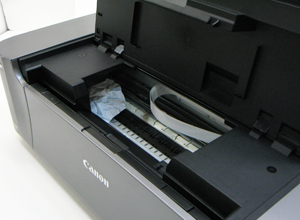Quantum Computing in Astrophysics: Unleashing the Power of Qubits

Introduction
As the realm of technology continues to advance, quantum computing emerges as a revolutionary force, particularly in the field of astrophysics. This article explores the transformative impact of quantum computing, delving into how qubits, the fundamental units of quantum information, are reshaping the way astrophysical simulations, calculations, and data analysis are approached.
Quantum Computing Basics
Before diving into the applications in astrophysics, understanding the basics of quantum computing is essential. Traditional computers use bits, which represent either a 0 or a 1. Quantum computers, on the other hand, utilize qubits, which can exist in multiple states simultaneously, thanks to the principles of superposition and entanglement.
Astrophysical Simulations and Quantum Superposition
Astrophysical simulations involve complex calculations that strain the capabilities of classical computers. Quantum computing’s superposition property allows qubits to exist in multiple states simultaneously, exponentially increasing computational capacity. This capability enhances the precision and speed of simulating celestial phenomena, such as galaxy formations and black hole dynamics.
Quantum Entanglement for Efficient Data Analysis
Quantum entanglement, where qubits become interconnected regardless of physical distance, enables more efficient data analysis in astrophysics. Analyzing vast datasets becomes less time-consuming as entangled qubits share information instantaneously, overcoming the limitations of classical computing in handling immense volumes of astronomical data.
Solving Complex Equations with Quantum Speed
Astrophysics often involves solving intricate equations beyond the reach of classical computers. Quantum computers excel at solving complex problems exponentially faster than their classical counterparts. This capability is particularly valuable in astrophysical research, where complex equations govern the behavior of celestial bodies.
Quantum Algorithms for Optimization
Quantum algorithms, such as the Quantum Approximate Optimization Algorithm (QAOA), offer novel approaches to solving optimization problems. In astrophysics, where optimizing telescope configurations, data collection, and signal processing are crucial, quantum algorithms provide more efficient solutions, saving time and resources.
Quantum Machine Learning for Pattern Recognition
Astrophysical data analysis relies heavily on pattern recognition. Quantum machine learning algorithms, leveraging the power of qubits, enhance the accuracy and speed of identifying patterns in astronomical datasets. This capability is pivotal in detecting subtle signals, anomalies, and celestial patterns that might go unnoticed with classical methods.
Challenges and Considerations
While the potential of quantum computing in astrophysics is immense, several challenges exist. Quantum computers are still in their early stages of development, and building and maintaining stable qubits remains a significant hurdle. Error correction and minimizing environmental interference are ongoing research areas critical for realizing the full potential of quantum computing in astrophysical applications.
Collaboration Between Quantum Physicists and Astrophysicists
The convergence of quantum physics and astrophysics requires collaboration between experts from both fields. Quantum physicists and astrophysicists working together can harness the unique capabilities of quantum computers, ensuring that the algorithms developed align with the specific needs and challenges of astrophysical research.
Future Prospects: Quantum-Safe Cryptography in Astrophysics
As quantum computers advance, so does the need for quantum-safe cryptography. In astrophysics, where secure communication of sensitive data is paramount, the integration of quantum-safe cryptographic methods becomes a future consideration to protect against potential threats to classical encryption posed by quantum computers.
Conclusion
Quantum computing’s integration into astrophysics marks a paradigm shift in how we approach complex calculations, simulations, and data analysis. The unique properties of qubits unlock unprecedented computational power, offering astrophysicists new tools to explore the mysteries of the universe. While challenges persist, the collaborative efforts of quantum physicists and astrophysicists pave the way for an exciting era of discovery at the intersection of quantum computing and astrophysics.


